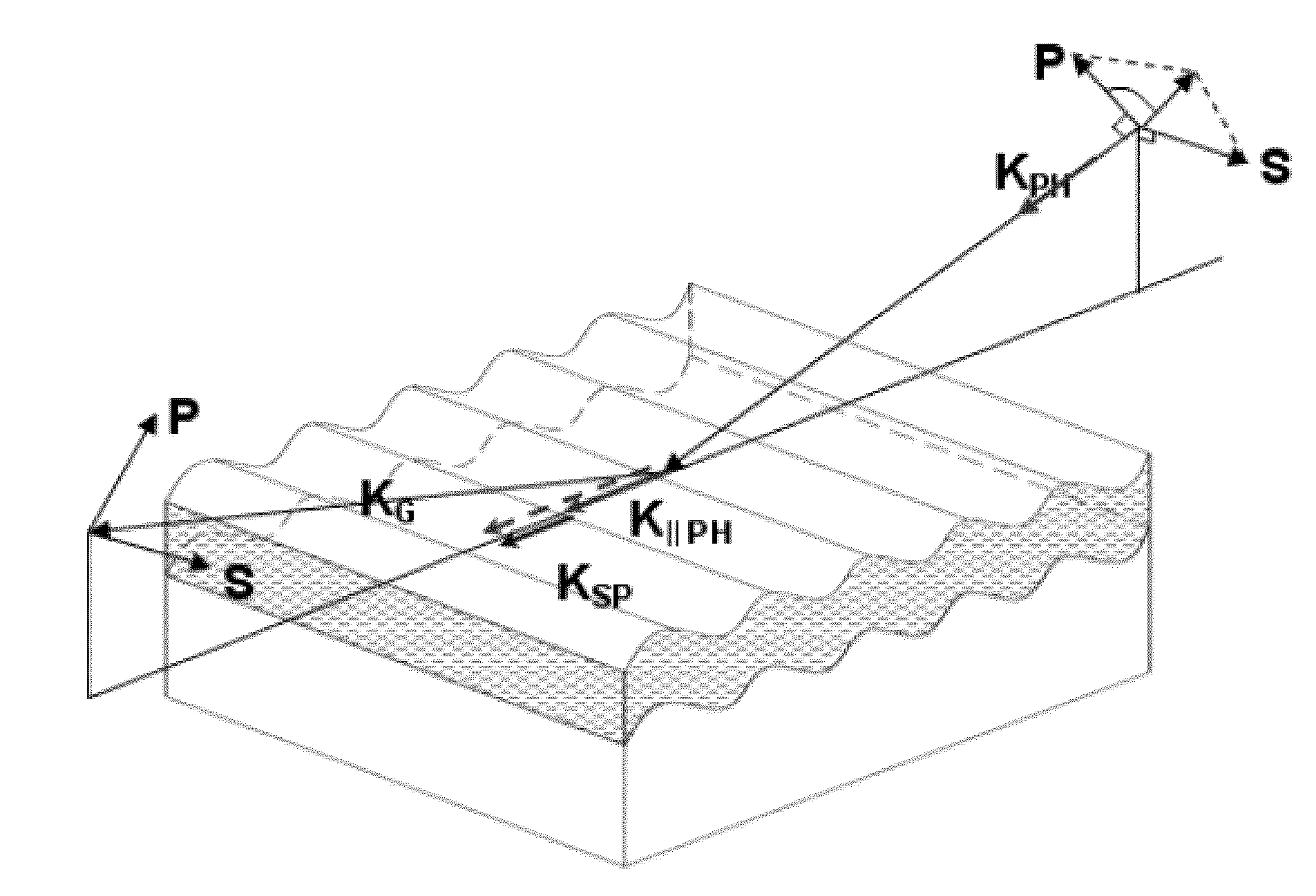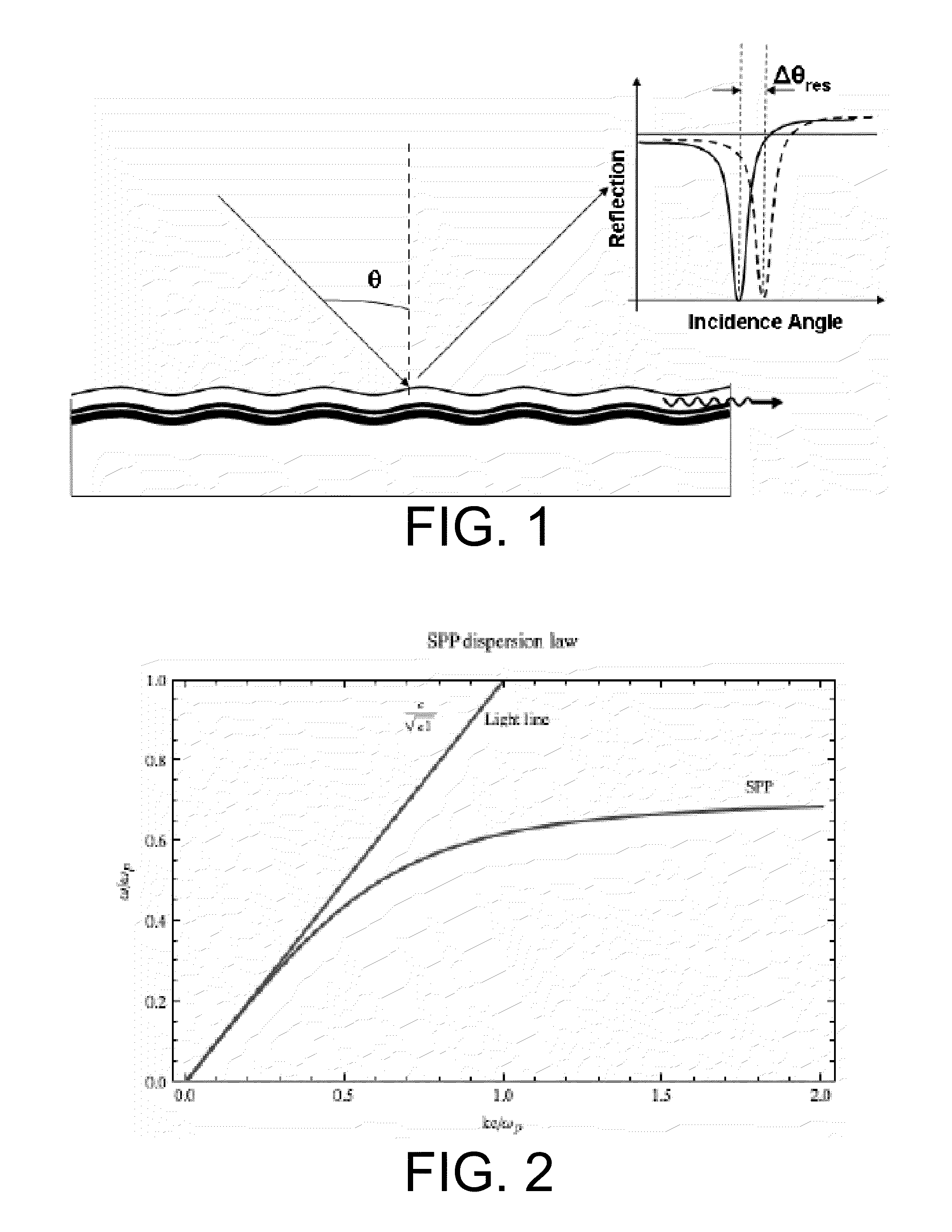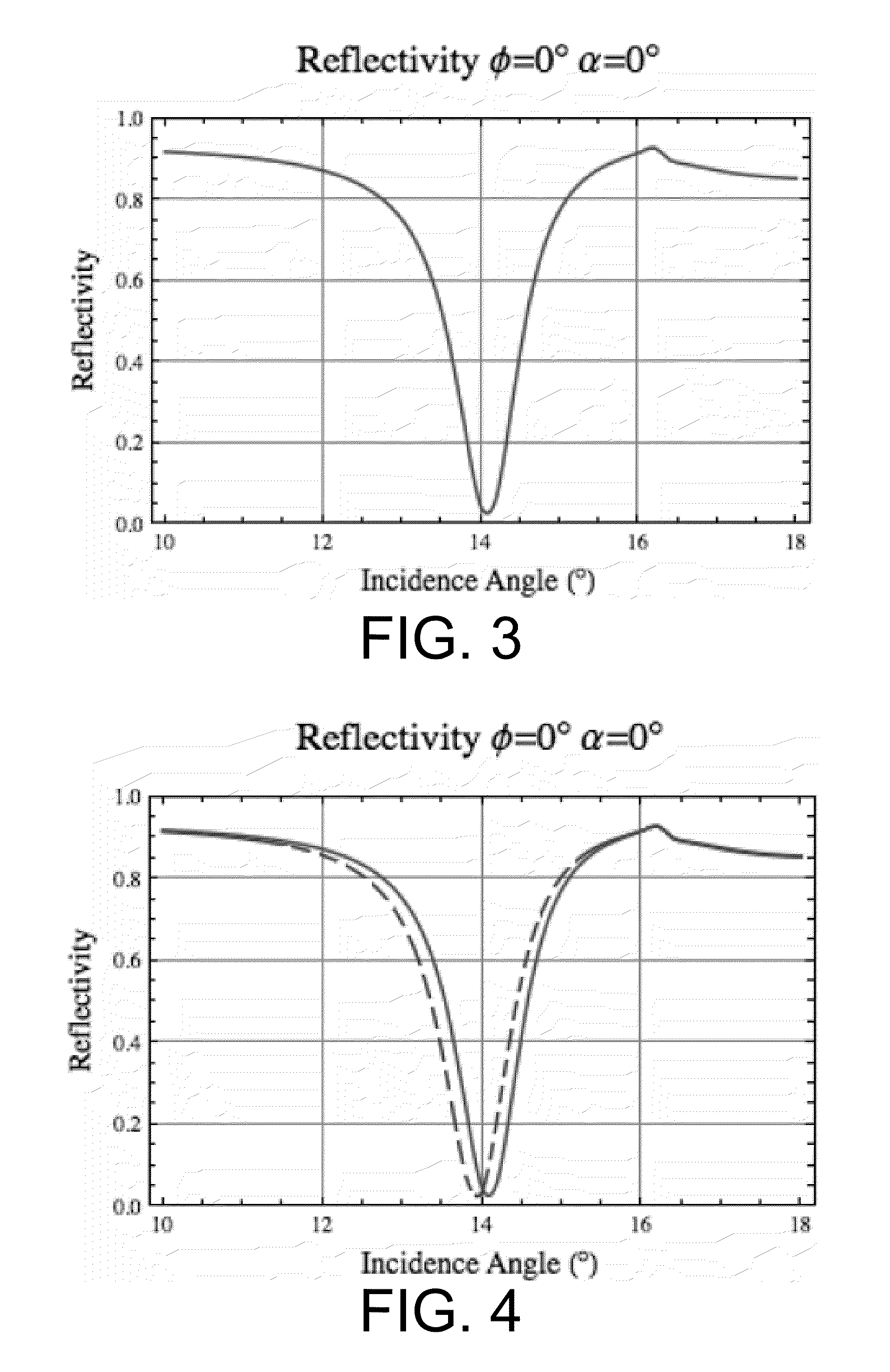Sensitivity enhancement in grating coupled surface plasmon resonance by azimuthal control
a plasmon resonance and azimuthal control technology, applied in the field of surface plasmon resonance sensors based on plasmonic grating, can solve the problems of low sensitivity, high cost of commercial prism-based spr instruments, and inability to miniaturize and integra
- Summary
- Abstract
- Description
- Claims
- Application Information
AI Technical Summary
Problems solved by technology
Method used
Image
Examples
Embodiment Construction
[0034]A preferred embodiment of the invention is now described in detail. Referring to the drawings, like numbers indicate like parts throughout the views. Unless otherwise specifically indicated in the disclosure that follows, the drawings are not necessarily drawn to scale. As used in the description herein and throughout the claims, the following terms take the meanings explicitly associated herein, unless the context clearly dictates otherwise: the meaning of “a,”“an,” and “the” includes plural reference, the meaning of “in” includes “in” and “on.”
Scientific Background
[0035]SPPs can be excited only in the frequency range wherein the real parts of the dielectric functions of the two media have opposite signs and the metal is opaque to radiation (negative real part of the dielectric constant). Commonly used metals are noble metals (Cu, Ag, Au) because free-electrons plasma model (Drude's Model) well explain dielectric function behaviour in the optical range. Assuming the validity ...
PUM
 Login to View More
Login to View More Abstract
Description
Claims
Application Information
 Login to View More
Login to View More - R&D
- Intellectual Property
- Life Sciences
- Materials
- Tech Scout
- Unparalleled Data Quality
- Higher Quality Content
- 60% Fewer Hallucinations
Browse by: Latest US Patents, China's latest patents, Technical Efficacy Thesaurus, Application Domain, Technology Topic, Popular Technical Reports.
© 2025 PatSnap. All rights reserved.Legal|Privacy policy|Modern Slavery Act Transparency Statement|Sitemap|About US| Contact US: help@patsnap.com



